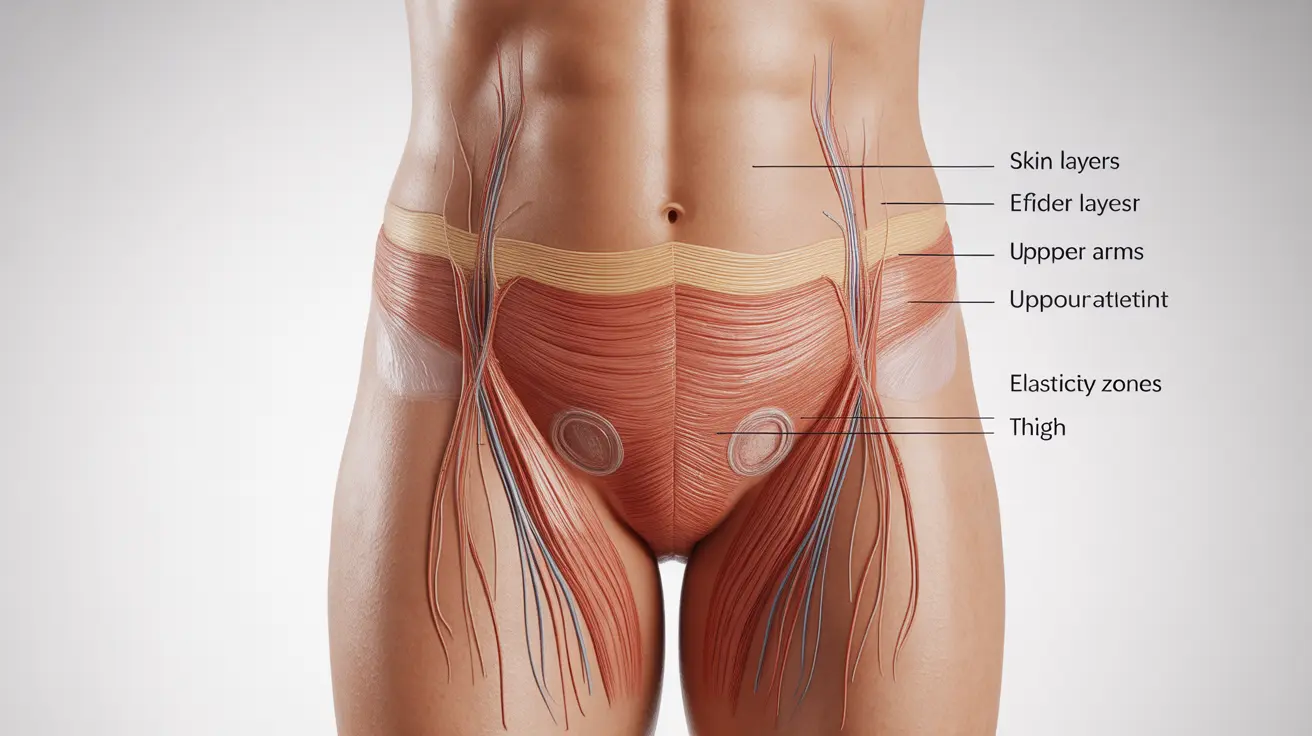Dealing with loose skin after weight loss is a common concern that affects many individuals on their health and fitness journey. When significant weight loss occurs, the skin that previously stretched to accommodate excess weight may not fully retract, leading to loose or sagging skin in various areas of the body. Understanding this natural process and the available management options is crucial for anyone experiencing or anticipating this challenge.
While loose skin can affect self-confidence and comfort, there are various approaches to address this condition, ranging from natural methods to medical interventions. This comprehensive guide explores the causes, prevention strategies, and treatment options available for managing loose skin after weight loss.
Understanding the Science Behind Loose Skin
Loose skin develops when the elastic components of the skin, primarily collagen and elastin, become stretched beyond their capacity to recover. This stretching occurs during weight gain, and when significant weight loss follows, the skin may not have enough elasticity to contract to the body's new, smaller shape.
Several factors influence the development and severity of loose skin:
- Age (older skin has less elasticity)
- Duration of obesity
- Amount of weight lost
- Genetics
- Sun exposure history
- Smoking status
Common Areas Affected by Loose Skin
Loose skin typically appears in specific areas of the body following significant weight loss:
- Abdomen and lower belly
- Upper arms
- Inner thighs
- Chest and breasts
- Face and neck
- Lower back
Natural Methods to Improve Skin Elasticity
Several lifestyle modifications and natural approaches can help improve skin elasticity and appearance:
Nutrition for Skin Health
A balanced diet rich in specific nutrients can support skin health:
- Protein for collagen production
- Vitamin C for collagen synthesis
- Omega-3 fatty acids for skin elasticity
- Hydrating foods and adequate water intake
Exercise Strategies
Targeted exercise can help improve the appearance of loose skin:
- Strength training to build underlying muscle
- Resistance exercises for toning
- Gradual cardiovascular activity for overall health
Medical and Surgical Solutions
When natural methods aren't sufficient, several medical interventions are available:
Non-Surgical Options
Less invasive treatments include:
- Radiofrequency treatments
- Body contouring procedures
- Chemical peels
- Specialized massage techniques
Surgical Procedures
For severe cases, surgical options may include:
- Body contouring surgery
- Tummy tucks (abdominoplasty)
- Arm lifts (brachioplasty)
- Face and neck lifts
Prevention Strategies
Taking proactive steps during weight loss can help minimize loose skin:
- Losing weight gradually (1-2 pounds per week)
- Maintaining proper hydration
- Following a balanced, nutrient-rich diet
- Protecting skin from sun damage
- Regular exercise, especially strength training
Frequently Asked Questions
What causes loose skin after significant weight loss and why does it happen?
Loose skin occurs when rapid or significant weight loss outpaces the skin's ability to retract. The skin's elasticity becomes compromised after being stretched for extended periods, and factors like age, genetics, and the duration of obesity play crucial roles in its development.
How can I naturally improve skin elasticity and reduce loose skin after losing weight?
Natural methods include maintaining proper hydration, consuming a protein-rich diet, taking collagen supplements, performing strength training exercises, and protecting skin from sun damage. Gradual weight loss can also help minimize loose skin development.
What medical or surgical treatments are available to remove or tighten loose skin?
Treatment options range from non-invasive procedures like radiofrequency treatments and body contouring to surgical interventions such as body lift surgery, tummy tucks, and arm lifts. The choice depends on the severity of loose skin and individual circumstances.
Which areas of the body are most commonly affected by loose skin after weight loss?
The most commonly affected areas include the abdomen, upper arms, inner thighs, chest, face, and neck. The severity and location of loose skin vary based on individual factors and weight loss patterns.
How does the speed and amount of weight loss influence the development of loose skin?
Rapid weight loss typically increases the likelihood of developing loose skin because it doesn't allow sufficient time for skin adaptation. Losing weight gradually (1-2 pounds per week) can help minimize loose skin by giving the skin more time to adjust to body changes.




